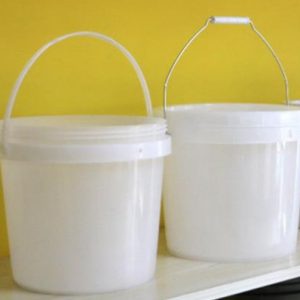
First, common food grade plastic buckets are available in two materials: polyethylene terephthalate (PET) and high density polyethylene (HDPE). PET is a colorless, odorless, purely transparent material. PET plastic drums are classified into food grade and non-food grade. The common Coke bottle in life is PET. Because food grade PET will decompose toxic substances at high temperatures, HDPE materials are often used for civilian foods. For example, the peanut oil that has just been squeezed out from the oil mill is temperature-bearing, and it is safer to use the HDPE food barrel.
HDPE is an acid-base stable material that does not react with food and has good toughness, cold resistance and high temperature resistance. But not all HDPE plastic buckets can be used to hold food. HDPE plastic buckets are divided into food grade and non-food grade. In daily life, when we choose HDPE plastic drum food, we can use some simple identification methods to judge whether it is food grade plastic bucket:
1, choose a brand. It is necessary to select the food plastic barrels produced by regular manufacturers, and check whether the manufacturers have the qualifications for the production of food plastic barrels. It is relatively reliable to select some brands of food-grade plastic barrels.
2, look with your eyes. Food-grade plastic drums have a waxy appearance, and non-food grades mostly contain recycled materials or fillers, and the color is dim. However, some fillers can now achieve better gloss, so you can’t just look at the appearance.
3, smell with your nose. No odor, food-grade plastic buckets have no pungent smell.
4, look at the price. Don’t choose products with unusual prices. If the product is much cheaper than most of the similar products in the market, the quality is often not guaranteed.















